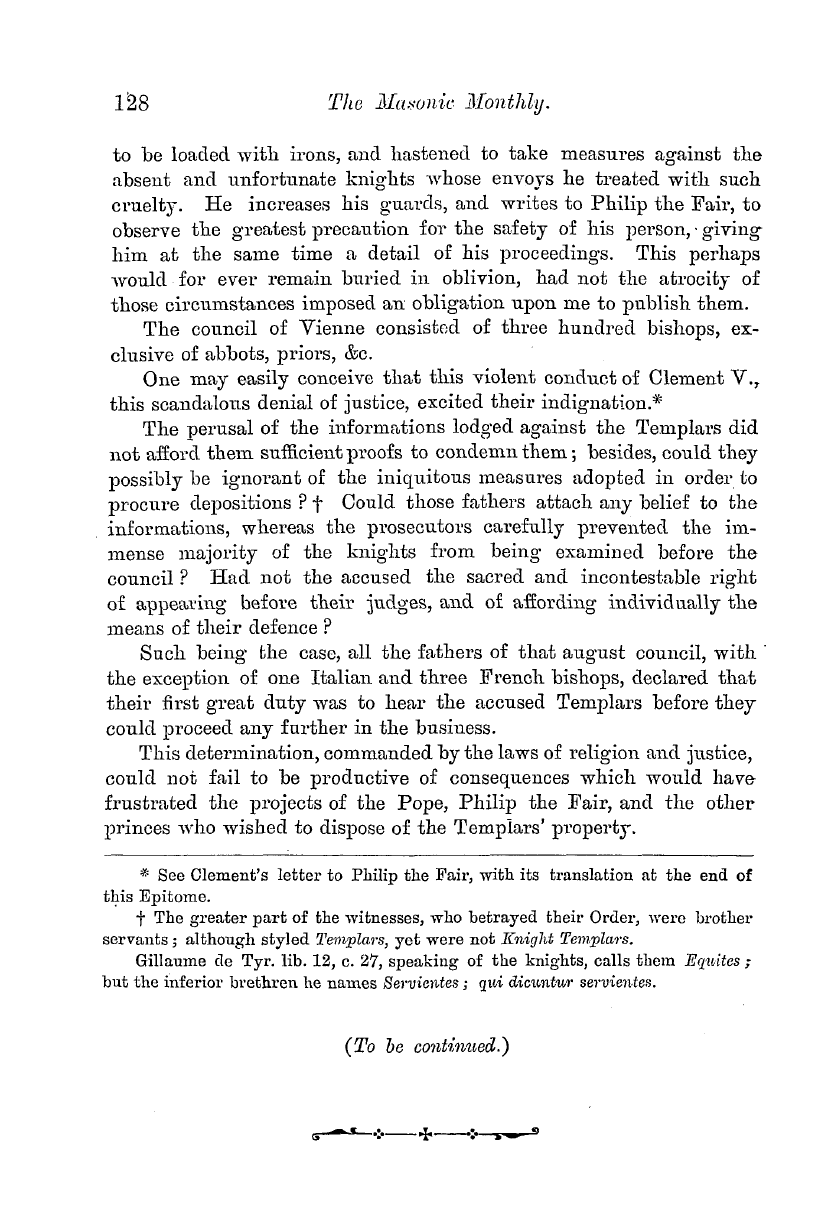Note: This text has been automatically extracted via Optical Character Recognition (OCR) software.
The Legend Of The Introduction Of Masons Into England.
Wilfrid travelled about with singers , masons [ csementariis ] and artizans , * that he restored York , then in ruins , f that he built Ripon J and that he miraculously restored Bothlem , a young man who fell from the roof during the building of Hexham . § There is , hoAvever , no word of Roman masons . Richard of
Hexham can hardly , I think , be taken as evidence in the present instance , as he died about 1190 , and dealt only with events during and after the reign of King Stephen . The statement that Benedict Biscop was connected with Monmouth is no doubt a printer ' s error . The conjoined abbeys of Wearmouth .
and Jarrow were the ones that he built , or as they are called by Bede | | " quod est ad ostium Viuri amnis , et juxta amnem Tinam , in loco qui voeatur ' In Gyraum . ' " I cannot agree with Bro . Woodford that the Early British and Anglo-Saxon buidings were for the most part of stone , but am
inclined to believe that they were largely built of wattles and wood , even as regards the body or walls of the churches . Certainly the poem of Alcuin , who died in the year 804 , contributes no new fact to our knowledge when he writes of a church founded 780 , as Bede informs us that the church of York was commenced of stonefH by Paulinus in 627 and , finished by Oswald , Avho was killed about 642 .
Benedict Biscop , who died about 690 , is credited by Bede not absolutely with , first introducing the art of building of stone into England in 674 , but with first importing from Gaul makers of glass— " a kind of Avorkmen hitherto unknown in Britain . " ** He obtained from Rome only those things which he could not discover , " even in Gaul . "
William of Malmesbury [ ob . 1143 ] seems to be the first of the chroniclers who gives Benedict Biscop the credit of first introducing masons into England , ff and his work was used with others in the composition of the account given in Stowe . Dr . Giles thus translates the passage : " He being the first person Avho introduced into England constructors of stone edifices , as well as makers of glass Avindows ; ££ for very rarely before
Note: This text has been automatically extracted via Optical Character Recognition (OCR) software.
The Legend Of The Introduction Of Masons Into England.
Wilfrid travelled about with singers , masons [ csementariis ] and artizans , * that he restored York , then in ruins , f that he built Ripon J and that he miraculously restored Bothlem , a young man who fell from the roof during the building of Hexham . § There is , hoAvever , no word of Roman masons . Richard of
Hexham can hardly , I think , be taken as evidence in the present instance , as he died about 1190 , and dealt only with events during and after the reign of King Stephen . The statement that Benedict Biscop was connected with Monmouth is no doubt a printer ' s error . The conjoined abbeys of Wearmouth .
and Jarrow were the ones that he built , or as they are called by Bede | | " quod est ad ostium Viuri amnis , et juxta amnem Tinam , in loco qui voeatur ' In Gyraum . ' " I cannot agree with Bro . Woodford that the Early British and Anglo-Saxon buidings were for the most part of stone , but am
inclined to believe that they were largely built of wattles and wood , even as regards the body or walls of the churches . Certainly the poem of Alcuin , who died in the year 804 , contributes no new fact to our knowledge when he writes of a church founded 780 , as Bede informs us that the church of York was commenced of stonefH by Paulinus in 627 and , finished by Oswald , Avho was killed about 642 .
Benedict Biscop , who died about 690 , is credited by Bede not absolutely with , first introducing the art of building of stone into England in 674 , but with first importing from Gaul makers of glass— " a kind of Avorkmen hitherto unknown in Britain . " ** He obtained from Rome only those things which he could not discover , " even in Gaul . "
William of Malmesbury [ ob . 1143 ] seems to be the first of the chroniclers who gives Benedict Biscop the credit of first introducing masons into England , ff and his work was used with others in the composition of the account given in Stowe . Dr . Giles thus translates the passage : " He being the first person Avho introduced into England constructors of stone edifices , as well as makers of glass Avindows ; ££ for very rarely before































































